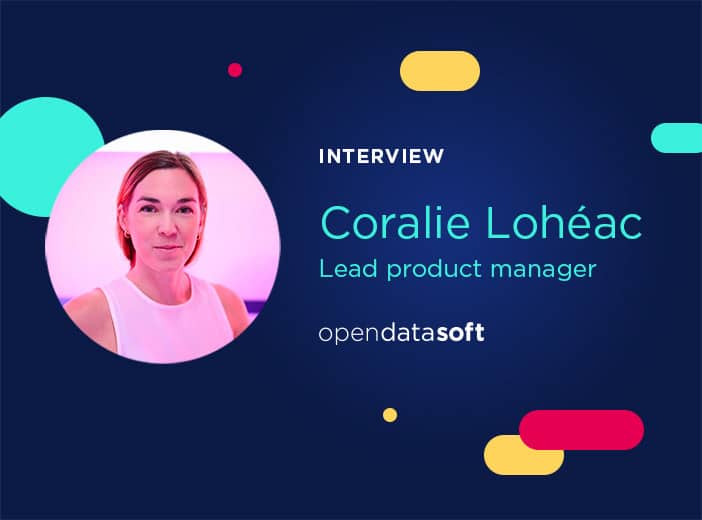How Is Data Changing Governance in Argentina?
“Better data is better policy.” -- Rudi Borrman, Deputy Director of Open Government Partnership Local. In this article, we interviewed him about how open data is changing governance in Argentina and the future of public policy.

Data is changing the way we work. In our previous monthly interview series, we discussed how data is changing the way we research, tell stories, and even write poetry. Today, we are digging into a new domain: governance.
How has open data changed the way countries around the world are governed? We took this question to Rudi Borrman, current Deputy Director of Open Government Partnership (OGP) Local to find out more.
Rudi previously developed Argentina’s first open data infrastructure as part of the National Open Government Strategy and ran the LABgobAR (the National Government Lab) engaging more than 30 000 government officials.
We centered our interview around data, open government, and the future of public policy.
You had helping Argentina develop its National Government open data lab. What were the initial objectives of this project, and who were the target audiences?
The National Office of Data and Public Information initially focused on the publication of government data. On a later stage, the goal was to bring further control to the data management process to ensure that data was produced and published with a mind-set that prioritized quality, value and re-usability. Then we developed a “Data as a Service” (DAAS) approach which emerged as a complementary effort to bulk data releases, facilitating data publishing and data consumption through the development of a suite of APIs based on 100% open data, and to be easily deployed by third-party organizations.
This approach targeted four specific user-case scenarios: First, data publishers that want to benefit from a simple, yet more powerful and user-driven approach to data publication and reuse; Second, data owners that want to sanitize, normalize, extend or increase the quality at entry of their data assets; Third, data analysts that use spreadsheets, statistical software and data processing packages to programmatically update data in their work environments, and finally developers creating either desktop, web or mobile applications that seek to integrate programmatic service requests into their product development cycle.
The LABgobAR is often highlighted by its “user-centered design,” which involved many government officials. User engagement is often lacking in other data-related projects we see. How did you engage local government to achieve this?
Evidence-based policy making was one of the core components of the LABgobAR methodology, so this was implicit in all our projects and trainings. LABgobAR was not a data lab but a more diverse unit to support policymakers (teams and individuals) with new tools and resources. Many of them use user-centered design approaches. Local governments that participate either on training programs or connecting for specific projects were guided into this methodology.
Now that you are with OGP (Open Government Partnership), how does data come into your new role and your everyday professional activities?
OGP is already a data-driven organization. There is a strong infrastructure of indicators that we use for monitoring and reporting the different activities within the open government action plans, the core component that our members are committed to deliver. As an international community of practice, it is key for us to be able to share and compare our evidence in order to improve support and continuous learning.
How have data changed the dynamics of local vs. national governance?
I think both are realizing more and more how important it is to invest in better data infrastructures and digital capacity in general. Better data is better policy, improved service delivery, more transparency, and hopefully more innovation. National governments can play a key role for coordination and guidance, but those locals with more resources will not wait for any standard or specific guidelines. The COVID-19 pandemic has shown how important it is to have good data available for urgent response and recovery, and was part of our Open Response/Open Recovery campaign guidelines on open data.
Local governance is at the heart of your work. Could you tell us a few concrete examples of how open local has positively impacted governance, and how data comes in the picture?
The pilot OGP Local program has shown inspiring innovation and practical results from tackling inequity in Austin, Texas, U.S.A. to participatory budgets in Sekondi Takoradi, Ghana to citizens monitoring corruption in Kaduna State, Nigeria. Improving access to health services in Buenos Aires, Argentina and bringing voices of citizens into policy making in Madrid, Spain. In many of these examples we have seen data being used (or re-used) as a way not only to make policy more transparent but actually more meaningful for people when turned into a specific product.
Looking into the future, what kind of impact do you think data can have on government innovation and public policy?
Disruptive. We still have a lot to do in terms of access, skills, infrastructure, privacy and security of course, but digital agendas are moving forward. Governments will need to solve the problem of talent acquisition and retention, and at the same time there is a huge opportunity for “GovTech” startups to start unlocking the potential of new products and services, many of them unknown today.
Thank you Rudi for this insightful interview!
If you are interested in learning more about how data is changing the way we work, we invite you to check out our other interviews!



